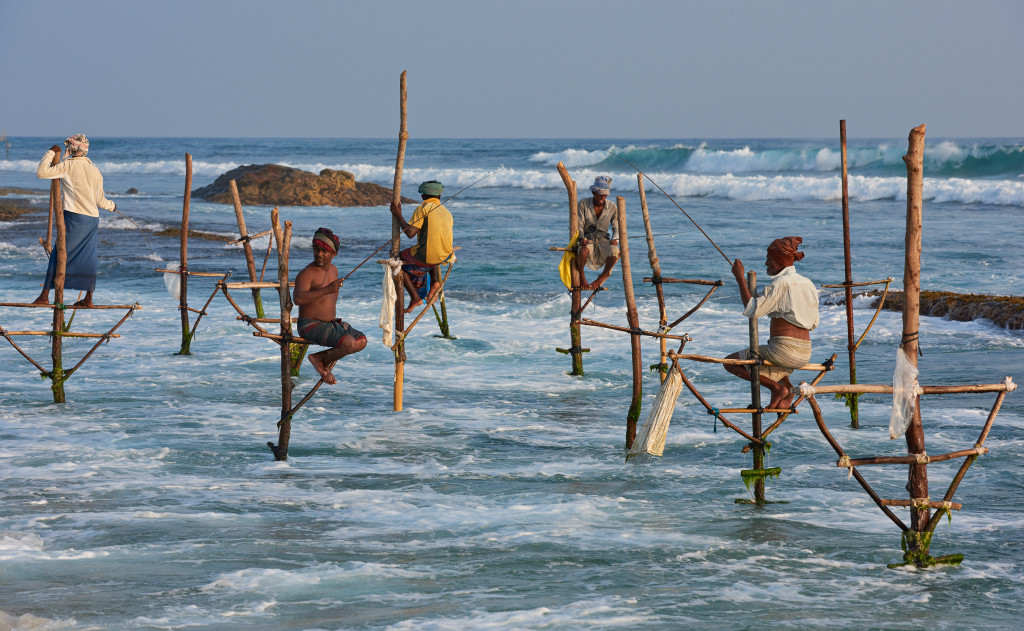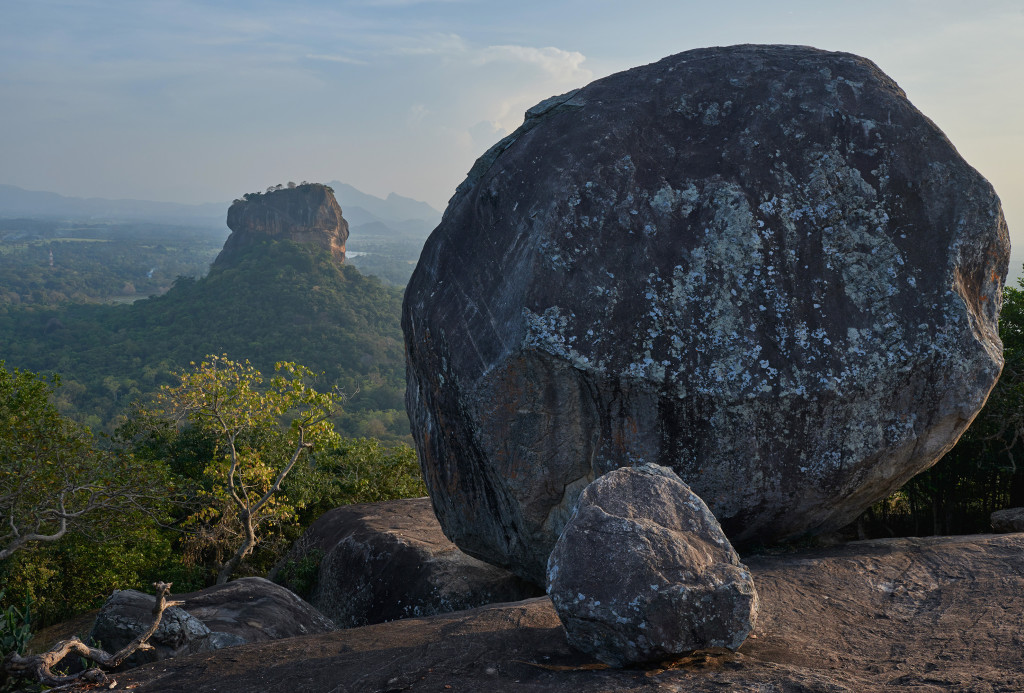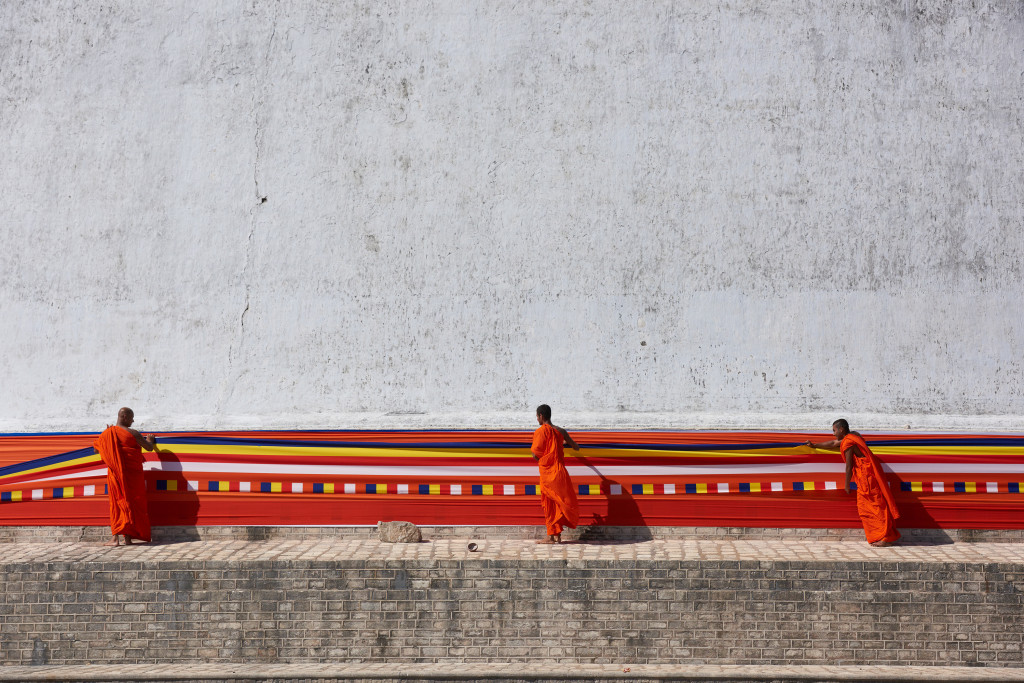
Stilt fishermen, Koggala
I have been given a camera to test. Not just any camera but one that is not available yet. At first glance it is not even terribly exciting, no Foveon-type full-format sensor, no digital medium-format camera in a Mamiya 7 gestalt, no curved image sensor, and no 36 MP light field camera. It is simply a major update of a full-format DSLR.
I am not allowed to reveal the brand and model name, but I was told I can post a review and images from it. I was lucky enough to have this camera for a test during a recent trip to Sri Lanka (more about this trip in future posts).
In short, it seems the manufacturer has listened to its customers or has given its prototypes to real pros that know how to make interesting photographs. Starting from an already operationally and ergonomically mature design, it seems that all operational bugs were ironed out before this camera is brought to the market. Featuring a large number of (minor) improvements, this new camera model turns out to be a very versatile, rigid and reliable tool, and will definitely become my go-to camera after its release. Not a video shooter, I can only comment on the still image options. So here we go:
- 42 MP CMOS sensor. I think this is a solid choice for a 35 mm FF camera, because it balances resolution, pixel acuity and noise very well. Everything with a higher resolution sensor will inevitably reduce the shooting envelope even further, in particular for handheld work. As it stands, it is already pretty punishing of poor shot discipline and challenges even the best lenses. However, they deviated from 24 x 36 format with its 2×3 aspect ratio, which originated around 1925 from Oskar Barnack’s use of two movie frames on standard Eastman Kodak roll film. Coming from large format (5×4) film I always had trouble filling the frame of 35 mm; not quite wide enough for landscapes and yet too wide for portraits. Now the sensor has an about 4/3 aspect ratio, a macro four thirds so to say.
- Top range haptic and tactility. I think that this is an important aspect, you are far more likely to use a camera that feels good in the hands, which in turn means you will actually want to go out and shoot more. Yet it seems that manufacturer have forgotten how to make cameras that inspire confidence; pick up a Nikon F2, a Linhof Technika, or a Hasselblad 500 and you will know what I mean. I wondered why Nikon discontinued their high-resolution version of their pro camera line, such as the D3X. I really appreciated the vertical grip and secondary controls, in particular for handheld portrait shoots. And let’s face it; the battery grips mounted on the prosumer bodies are a far cry from the haptic of the pro models.
- The camera is delivered with two batteries and two chargers. One tabletop charger that holds two batteries at a time, as well as a compact, USB-compatible travel charger. This allows battery-based and solar charging, as well as the use of ipad/iphone power adapters.
- Dynamic range of 14 stops at base ISO, obviously with some care required to avoid highlight clipping. The company claims a true 16-bit workflow in the processor unit, which is difficult to verify, as I did not have access to a raw converter for this model yet. One really needs to wait for the production version and run print jobs on high-gamut printer to be able to tell a difference. It seems to me though, that there is less internal cooking of the raw files so you have more control in the post processing stage.
- Integrated, Arca Suisse compatible tripod mounting plates both for horizontal and vertical mounting. This is a welcome addition that releases one from mounting an L-bracket, which saves a $ 100 or so and a bit of weight. An integrated tripod-mounting rail could be found for decades on the V-series Hasselblad cameras, why other manufacturers did not get the idea and stick to the 1/4” screw socket is beyond me.
- Raw histogram preview. What appears to be clipped even on the flattest picture control setting often has an additional stop of highlight recoverability in Lightroom and CaptureOne. The reason is that the histogram is read off the preview jpeg embedded in the raw file. With a RAW histogram it is now much easier to expose to the right (ETTR) without the risk of highlight clipping.
- 3-axis in-body image stabilization (IBIS). Everybody knows that VR helps immensely with the shooting envelope. But it is also true that VR makes lenses bulkier and is difficult to realize for wide angle, though it has advantages over IBIS for large focal lengths. I think it is reasonable they limited the motion to shift (x and y axes) and roll in order to guarantee the plane parallelism of the sensor, which is required to the micron or so. IBIS helps also for the use of vintage lenses and enables the pixel-shift (multi-shot) mode. I would not rate the resulting image at 80+ MP equivalent, but rather at 60-70 MP, obviously only for static subjects, e.g., studio work and architecture.

Sigiriya
- Hybrid viewfinder. By slightly enlarging the prism they managed to include an electronic view finder (EFV). So you have the best of both worlds. Better focus tracking for fast moving subjects and low-light focusing, increased battery life when the EVF and life view are turned off, but also exposure preview (sort of), depth of field preview (sort of) and white-balance preview when using the EVF. The viewfinder provides adequate eye relief for spectacle wearers as well as a built in diopter adjustment.
- 5” touchscreen LCD. A retina-type quality screen with more than 400 psi resolution and gorilla glass. Still no tilting screen (for reasons of weather sealing I assume), but compensated by a flawless connection to an idevice. Double tap and swap configurable, just like on the iPhone or iPod, which lets you select the AF points and swipe through shots easily in the playback mode. Good that they left some of the key elements on nobs and dials for redundancy, because these dials can be handled also with light gloves and with the eye at the viewfinder.
- WI-FI and Bluetooth connections allowing wireless tethering to an idvice or an Android system, and so providing a fully configurable preview window, including focus peaking, highlight/shadow warning, and raw histogram.
- Shutter delay option coupled to a built in accelerometer. No more guessing of the settling time, which obviously depends on external parameter such as the rigidity and damping characteristics of the entire system composed of camera body, lens, tripod, and support.
- Automized capture of a focus stack using autofocus lenses, simply by setting the close and far focus point. The number of images in the stack is calculated for the used focal length and aperture.
- Double card slots with a removable, internal adapter socket. You can chose between a number of these sockets to meet your requirements and legacy cards. I also makes the camera future proof.
- U1 and U2 settings added to the virtual mode dial. Now all settings are allowed for this mode, e.g., exposure delay, live view on/off, electronic first curtain, auto-ISO etc. It is also possible to have all initially configured settings restored after local adjustments when the camera is switched off.
- 5 fps continuous shooting mode. Still moderate compared to the pro models (with lower pixel count) but with a buffer for about 50 RAW images when using fast cards.
- Matrix, spot, highlight protected ETTR, as well as shadow-protected exposure modes. Bracketing of the exposure modes is now possible, which I find a welcome addition to the brute-force method of “normal +- EV”.
- 153-point AF covering 90% of the frame, all cross-type sensors.
- Fully configurable menu system via a tethered PC, just like installing and backing-up apps on the iPhone. This allows you to disable all shooting modes and in-camera processing menus that are not required in your workflow.
- Up to 1 hour exposure time in aperture priority mode.
I guess that by now you have sensed an April Fool’s Day post. But as I have not posted for quite a while, I thought the time was up. So let’s take this as my complaint and wish list for the next upgrade of the Nikon D8xx line.

Anuradhapura
All the above is so obvious that I can but wonder if the camera manufacturers listen to their users. But perhaps they are arguing like Steve Jobs: How can people tell you what they want if they haven’t seen it before? The problem is that we have indeed seen all the features in the list, albeit not in a single camera. And I am not talking about conflicting objectives here. It is clear that physics prevents you from designing a low-cost, pocketable 400 mm f/2.8 lens covering FF or larger. I am not obsessed about the weight issue either, a full frame lens has a certain weight and I do not see the point in mounting a flimsy body to a > 1 kg lens. And one should be prepared to sign a cheque in the $ 5-6 k range, fair enough.
Obviously, we are now in a state of sufficiency for most customers, with markets close to saturation. Moreover, image quality improvement is not as fast as 10 years ago. Consequently we will be flooded with incremental updates (retina screen on the D820, idevice connectivity for the D830* and so on) with the expectation that we will be frustrated enough or invested enough to buy it.
But this is also a good development for the customer. We don’t need to jump at every new release, but can skip the early production samples and wait until the price comes down. I recently picked up a D810 at about 1000 $ below the release price and with a 3 year warranty to boot.
We may even start to look at used models, a strategy that worked just fine during the film days.
*Replace by Mk IV, Mk V etc. if you are a Canon shooter
One Comment
Nice article, great photos!